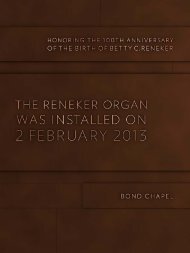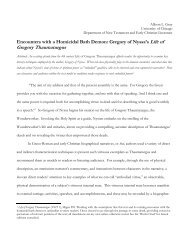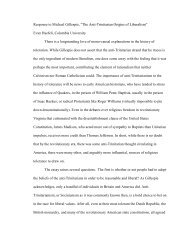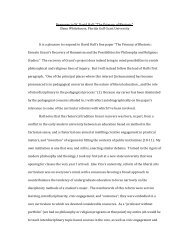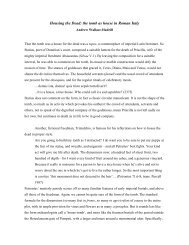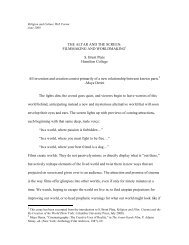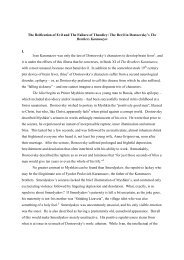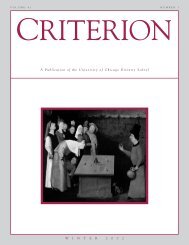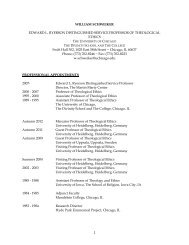Nota Bene - University of Chicago
Nota Bene - University of Chicago
Nota Bene - University of Chicago
You also want an ePaper? Increase the reach of your titles
YUMPU automatically turns print PDFs into web optimized ePapers that Google loves.
adornaverunt). 88 On one side panel, inscribed above a griffin, is the inscription Prosenes<br />
receptus ad deum ... scripsit Ampelius lib (“Prosenes was received into God ... Ampelius, his<br />
freedman, wrote this”). The composite nature <strong>of</strong> this sarcophagus is manifested in that the 2<br />
inscriptions are physically discrete (and discreet, perhaps, in the case <strong>of</strong> the second) and the<br />
two third person authors (the liberti <strong>of</strong> the first dedicatory inscription, and the Ampelius <strong>of</strong> the<br />
second, informative one). The words themselves have a very different physical disposition and<br />
public voice. And the juxtaposition <strong>of</strong> the words Prosenes receptus ad deum with the elaborate<br />
griffin on the side panel, while it may surprise us from this distance, apparently did not concern<br />
or confuse Ampelius who comfortably added them to honor his patron. Much may have been<br />
true <strong>of</strong> the full decorative program <strong>of</strong> the Abercius monument. Between “crypto” and “phanero”<br />
Christian inscriptions lies the complex world <strong>of</strong> lived realities and cultural embeddedness <strong>of</strong><br />
Christians <strong>of</strong> the early third century. 89<br />
Conclusion<br />
Much more work remains to be done to lift study <strong>of</strong> this important Christian inscription<br />
out <strong>of</strong> blank space and back into various reconstructions <strong>of</strong> the monument <strong>of</strong> which it was a<br />
part. This paper is only a start on that task. We need better imagistic models to try to<br />
reconceive this monument within its various contexts -- biographical, physical, artistic,<br />
monumental, literary and geographical -- and, we must insist, each <strong>of</strong> those models must itself<br />
be a time-lapse one rather than a single snap shot. The exercise is invaluable, even if we<br />
cannot reach certainly, or perhaps especially because we cannot reach certainty, and should<br />
not prematurely curtail our imagination <strong>of</strong> what the “queen <strong>of</strong> the Christian inscriptions” may<br />
have signified at any point in history.<br />
------------------------------------<br />
Page 28<br />
88 My interpretation <strong>of</strong> this sarcophagus is dependent upon Peter Lampe, From Paul to Valentinus:<br />
Christians at Rome in the First Two Centuries, trans. M. Steinhauser (Minneapolis: Fortress, 2003) 330-34.<br />
89 MacKechnie’s essay presumes an either/or which such epigraphicly complex monuments as Prosenes



